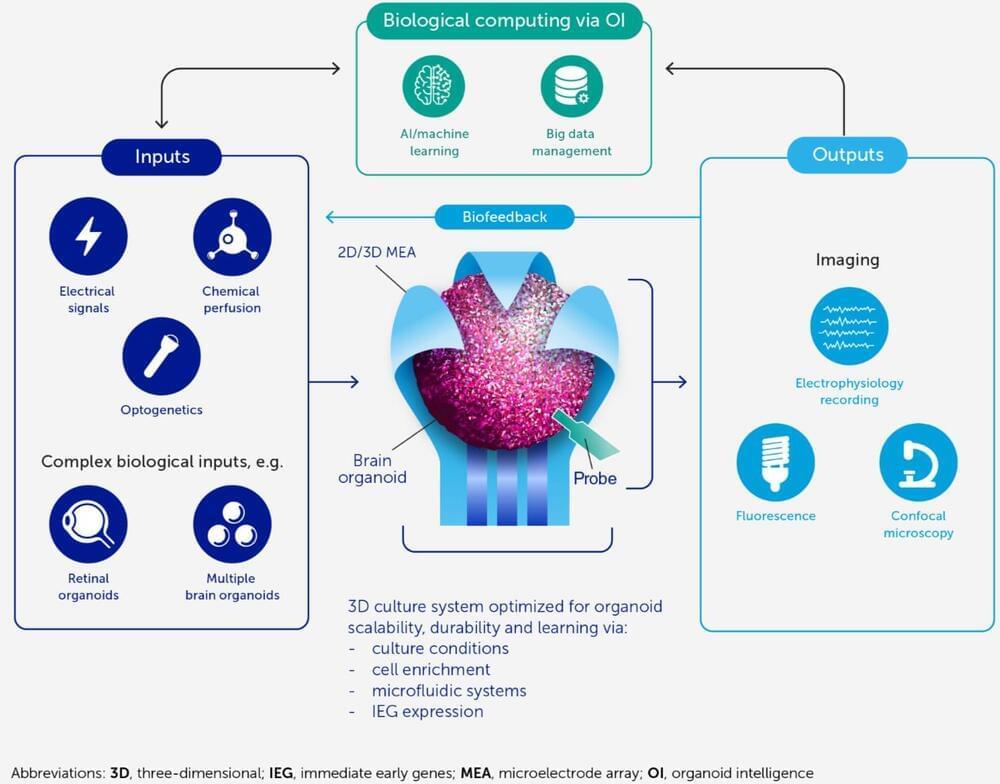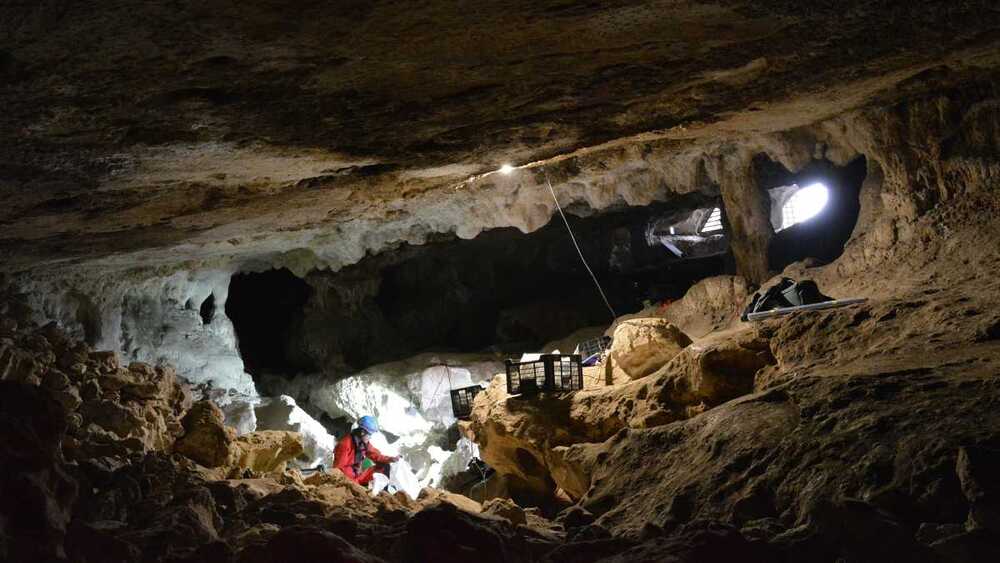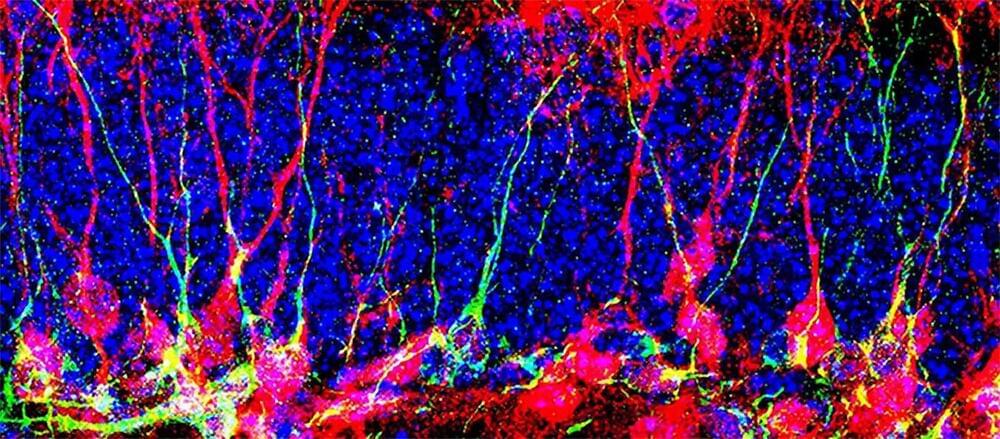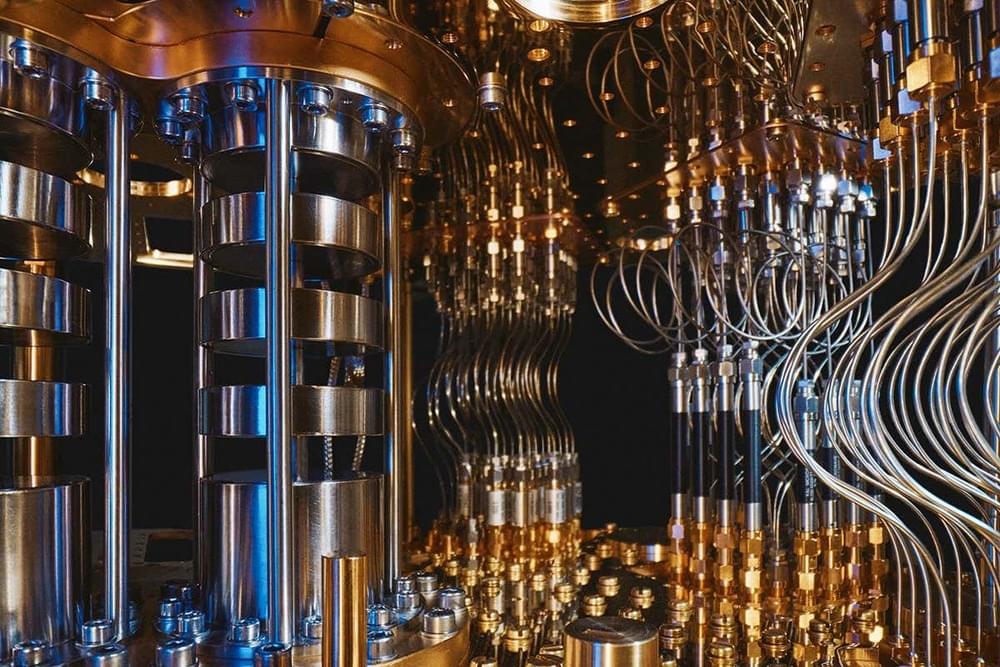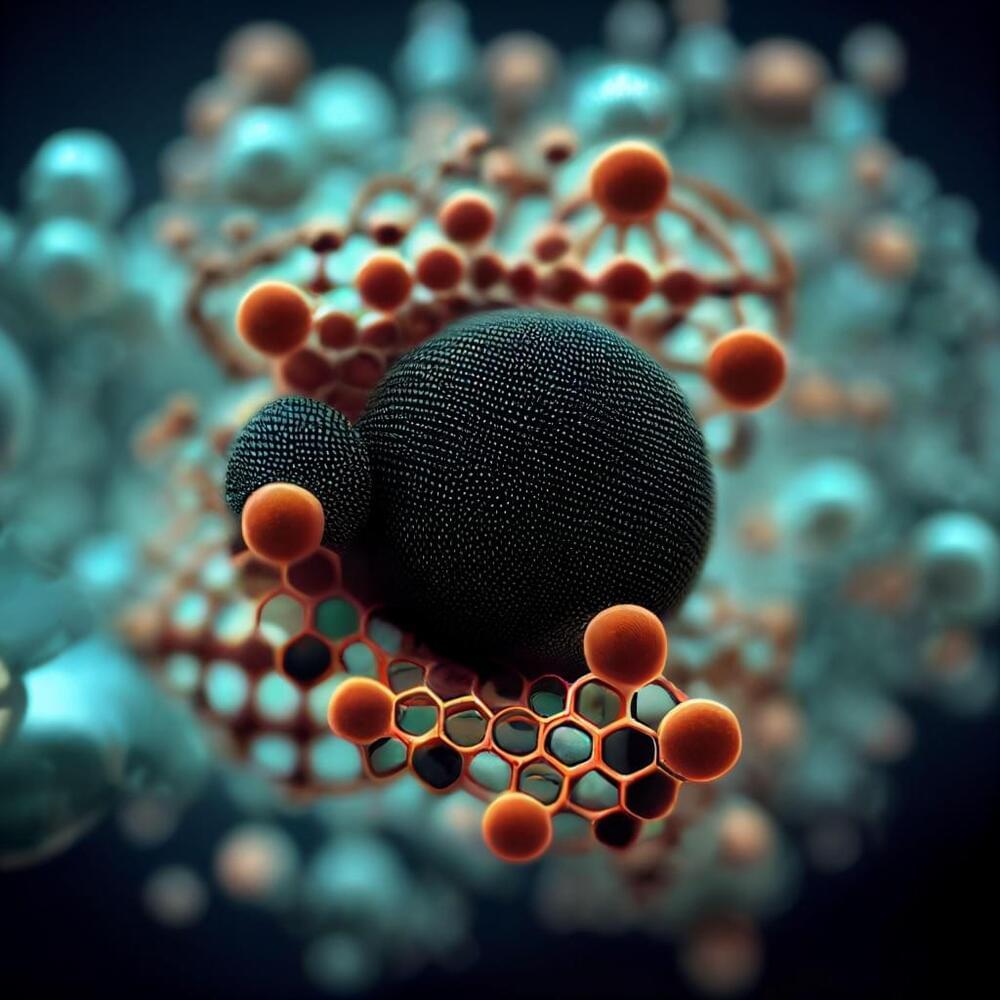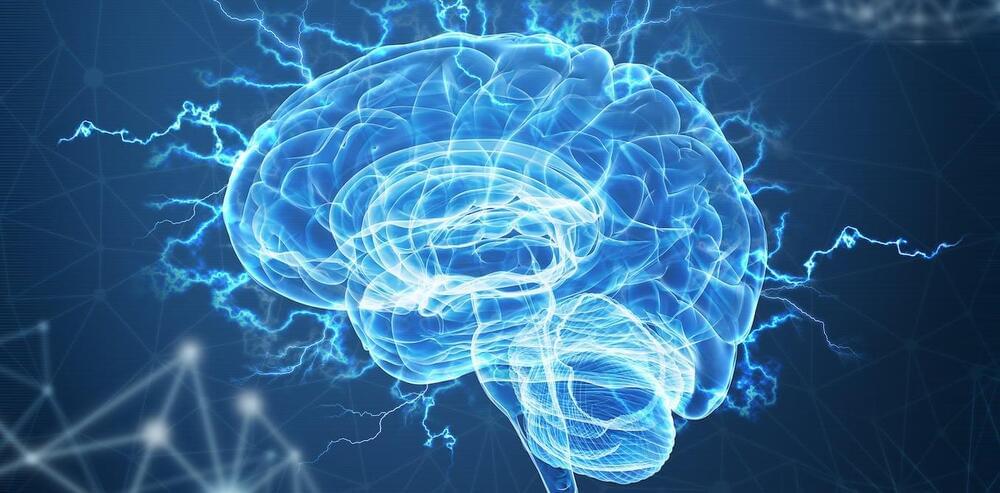So why not sidestep this conundrum and use neural tissue directly as a biocomputer?
This month, a team from Johns Hopkins University laid out a daring blueprint for a new field of computing: organoid intelligence (OI). Don’t worry—they’re not talking about using living human brain tissue hooked up to wires in jars. Rather, as in the name, the focus is on a surrogate: brain organoids, better known as “mini-brains.” These pea-sized nuggets roughly resemble the early fetal human brain in their gene expression, wide variety of brain cells, and organization. Their neural circuits spark with spontaneous activity, ripple with brain waves, and can even detect light and control muscle movement.
In essence, brain organoids are highly-developed processors that duplicate the brain to a limited degree. Theoretically, different types of mini-brains could be hooked up to digital sensors and output devices—not unlike brain-machine interfaces, but as a circuit outside the body. In the long term, they may connect to each other in a super biocomputer trained using biofeedback and machine learning methods to enable “intelligence in a dish.”
